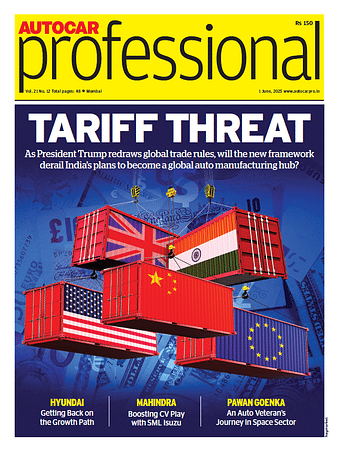Tata Motors' strategic demerger aims for $1 billion revenue per segment
Post-restructuring, the company will be divided into two listed entities: TML, encompassing the commercial vehicle business and related investments, and TMPV, covering the passenger vehicle business, electric vehicle (TPEM) business, JLR, and their related investments.
Tata Motors, currently in the process of demerging its commercial vehicle unit, anticipates that each of its eight distinct business segments will surpass $1 billion in revenue and profitability.
The eight identified segments are: heavy commercial vehicles; intermediate, light, and medium commercial vehicles; commercial vehicle passengers; international business; TML Smart City Mobility Solutions; and digital and non-vehicular (spares, fluids, and aggregates). These units will operate as independent profit centres, post the demerger. Girish Wagh, Executive Director of Tata Motors, highlighted that with dedicated teams for each segment, the company will achieve a sharper focus on value creation. This strategy involves leveraging data to explore metrics such as top-line revenue, profitability, return on capital employed, and cash flow.
When asked if each of these businesses could have at least a billion dollar revenue potential, Girish Wagh, Executive Director of Tata Motors, remarked, "So, I think, see, each of these businesses has already looked at what the revenue potential could be. And, you know, it would be surprising to have a business, that is not to that scale."
Wagh explained the rationale for focussing on these eight segments, noting that each caters to different customer needs, pain points, and convenience requirements, necessitating distinct business models. Some segments also have a geographical aspect tied to international expansion plans. Within the non-vehicular segment, sub-businesses like spare parts, automotive fluids, and aggregates require tailored approaches. This strategy aims to reduce cyclicality and shift from product-based offerings to services and solutions, supported by robust digital infrastructure.
Each segment has clear financial targets and is being analyzed for growth potential and aspirations to shape their business plans.
Tata Motors to demerge CV business
As part of the restructuring, Tata Motors will demerge its commercial vehicle unit, including all related investments, into TMLCV. The existing passenger vehicle business in TMPV will then merge into TML, the currently listed entity.
Post-restructuring, the company will be divided into two listed entities: TML, encompassing the commercial vehicle business and related investments, and TMPV, covering the passenger vehicle business, electric vehicle (TPEM) business, JLR, and their related investments. Tata Motors announced this major restructuring plan in March, aiming to unlock greater value across its businesses.
RELATED ARTICLES
Investigation confirms discrepancies at Ramkrishna Forgings, company to take corrective action
Automotive component supplier finds errors in production recording led to material misstatement across two financial yea...
Tractor Sales Maintain High Single-Digit Growth in May
Leading tractor manufacturers, who had earlier projected high single-digit growth for 2025-26, said the early onset of ...
Hyundai Motor India Foundation Supports Emergency Healthcare Services in Pune
As part of its Sparsh Sanjeevani program, HMIF supports emergency medical services in Takve and Yelse villages with the ...





 08 Aug 2024
08 Aug 2024
 8912 Views
8912 Views





 Shahkar Abidi
Shahkar Abidi


 Yukta Mudgal
Yukta Mudgal

 Sarthak Mahajan
Sarthak Mahajan

